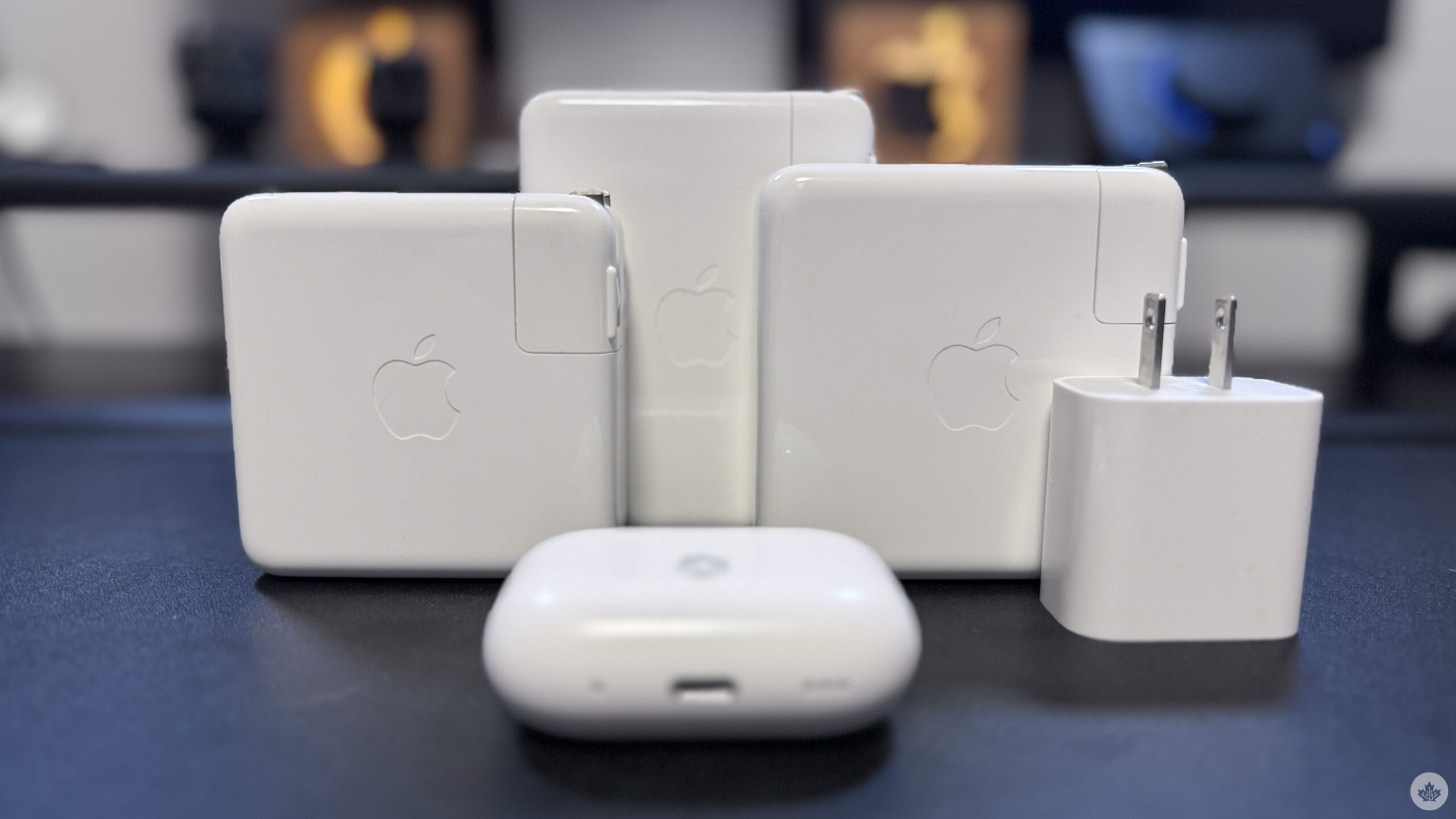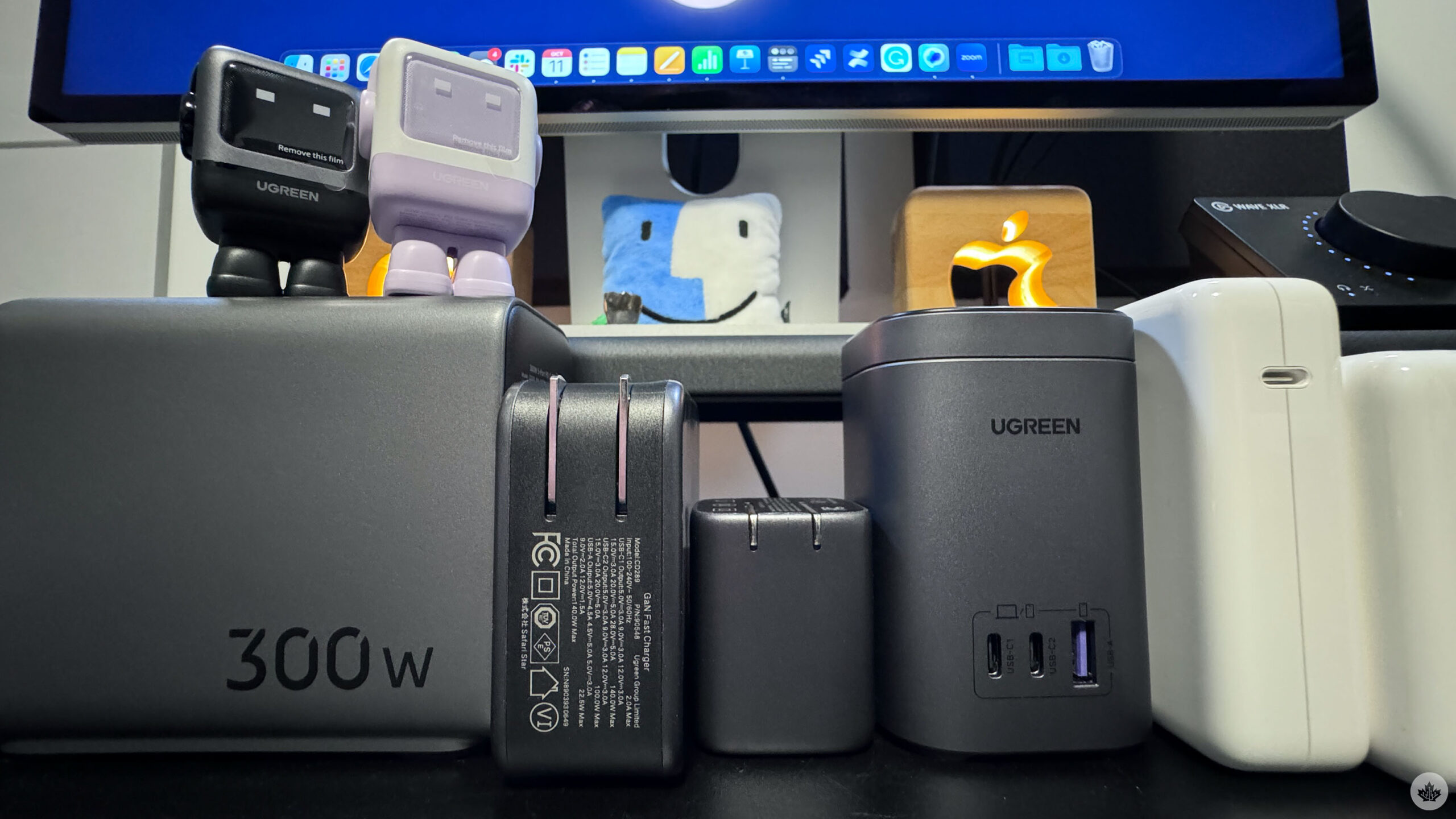
What do you do when you’ve stretched battery efficiency to its limits but don’t want a thicker device caused by installing a larger battery?
Well, you could attempt to innovate on existing battery technology. But that’s expensive, time-consuming, and challenging. So, while we work on improving power efficiency and battery storage technology, we can just do the next best thing — charge our devices faster.
When I was younger, I remember discouraging people from using a 12-watt (12W) power adapter because it might “over-charge” their device. Boy, do I have egg on my face. Modern devices are intelligent and can’t be “over-charged” like devices of old may have. iPhones, iPads, Macs, and Apple Watches know how much electricity they can safely consume and limit charging when connected to a power adapter capable of delivering more.
In fact, fast charge is a convenient way to quickly top up your Apple device when you need some extra battery life to get you through the day but can’t wait around forever. Let’s define what fast charge is, if there are any risks, and what hardware you need to do it.
What is fast charging?
Apple defines fast charge for iPhones and Macbooks as a device charging from 0 percent battery to 50 percent in around 30 minutes. Apple Watches are a tad different, with fast charge being from 0 percent to 80 percent in approximately 45 minutes. I write fast charge instead of fast charging to align with Apple’s support documentation as the feature of quickly topping up an Apple device’s battery is branded fast charge.

iPads don’t officially support fast charge. However, iPads generally charge faster with higher-wattage power adapters. Wattage is the measurement of the amount of energy a particular power adapter can deliver to a device. The majority of Apple’s devices that still ship with a power adapter do not ship with a fast charge compatible adapter for that particular device. However, that included adapter may be fast enough for another device. For example, an iPad shipping with a 20W power adapter can fast charge an iPhone.
To fast charge a particular device, you need a power adapter of at least:
- 18W for Apple Watch Series 7 and above
- 18W for iPhone 11 Pro and older
- 20W for iPhone 12 and newer
- 67W for the 13-inch MacBook Air (2022 or later)
- 70W for the 15-inch MacBook Air
- 96W for the 14-inch MacBook Pro (2021 or later)
- 140W for the 16-inch MacBook Pro (2021 or later) via Apple’s USB-C to MagSafe cable
- 29W for most iPads
Side Notes:
- Apple Watch SE and Apple Watch Series 6 and older do not support fast charge.
- MagSafe-compatible iPhones can charge up to 15W using MagSafe and a compatible power adapter.
- All MacBooks listed above except for the 16-inch support fast charge via Apple’s USB-C to MagSafe cable or compatible USB-C and Thunderbolt 3 cables.
- All MacBooks listed above except for the 16-inch support fast charge via compatible third-party displays over Thunderbolt 3 or USB-C like the LG UltraFine 5K, Apple Studio Display, and Apple Pro Display XDR.
- MacBooks not listed above do not support fast charge.
- While iPads do not officially support fast charge, the community consensus is that most iPads charge faster with at least a 29W power adapter, just not quite as quickly as Apple’s official fast charge feature.
What are the risks of fast charging?
This is a loaded question. As long as you use a power adapter from a trusted brand, there is no safety risk when you fast charge your Apple device. Whether you fast charge your device or not, using a cheap or sketchy cable or power adapter can pose a fire risk. One of the reasons Apple’s lightning cables are so expensive is because they are very well-built cables from a safety perspective. In part, Apple’s Made for iPhone (MFi) program ensures third-party cables meet Apple’s safety standards while being less expensive.
Depending on who you ask, fast charge could degrade your device’s battery quicker than expected. Chemistry is complicated, and battery chemistry is more so. Super high-level, extreme heat or cold can impact your battery. Fast charge generally does give off more heat. Similarly, the more a battery is discharged, does impact longevity. Naturally, people who fast charge may use their devices more and, therefore, may wear their battery out more quickly.
“It’s essential to remember that when you purchase a power adapter with multiple ports, you expect its wattage output to be divided among its ports.”
You also cannot overcharge your device. Modern technology knows when to stop accepting power beyond a specific wattage from a power adapter and when the battery hits 80 or 100 percent. Again, battery chemistry is complex. Reducing how long a device’s battery is held above 80 percent can extend its health. Apple has an Optimized Battery Charging feature for iPhone, Mac, and Apple Watch. I guess iPads don’t need fast charge or optimized battery health.
Finally, no, you do not need to drain your device’s battery to 0 percent and then charge it to full or for 24 hours before using. I’m not sure where that comes from, but it is not a thing with modern Apple devices. I was always asked this when I worked at the Apple Store. Apple has a webpage on maximizing battery life and lifespan.
What power adapter do I need?
Fortunately, there are many options for those looking to purchase a power adapter that supports fast charge. There are countless fantastic brands, including Apple, Belkin, Mophie, Anker, and UGREEN. Apple provides power adapters with many of their devices, but not all. Meanwhile, Belkin and Mophie are trusted partners of Apple. The challenge is that these three brands tend to be more expensive than third-party alternatives.
Anker and UGREEN are two great alternatives at more friendly prices. Personally, I use several UGREEN power adapters around my house because of their affordability, power output, and availability on Amazon. Many of UGREEN and Anker’s power adapters are GaN. GaN stands for Gallium Nitride. GaN chargers are physically small and run cooler compared to traditional power adapters.
 It’s essential to remember that when you purchase a power adapter with multiple ports, you expect its wattage output to be divided among its ports. For example, Apple’s dual USB-C port power adapter is only 35W. A single-connected iPad can get 29W, but connecting a second one means each device would receive 17W. In comparison, UGREEN’s 200W Nexode power adapter can deliver 100W from USB-C ports one and two, 65W from USB-C ports three and four, and 10W from the two USB-A ports.
It’s essential to remember that when you purchase a power adapter with multiple ports, you expect its wattage output to be divided among its ports. For example, Apple’s dual USB-C port power adapter is only 35W. A single-connected iPad can get 29W, but connecting a second one means each device would receive 17W. In comparison, UGREEN’s 200W Nexode power adapter can deliver 100W from USB-C ports one and two, 65W from USB-C ports three and four, and 10W from the two USB-A ports.
Below are some possible recommendations for compatible fast charge power adapters:
Fast Charge an iPhone or Apple Watch:
- Apple 20W USB-C Power Adapter: $25 on Amazon
- UGREEN 20W USB C Charger: $16.99 on Amazon
- Anker 20W 2-Pack: $34.99 on Amazon
Fast Charge an iPad, iPhone or Apple Watch:
- Apple 30W USB-C Power Adapter: $49 on Amazon
- UGREEN 30W USB C Nexode GaN Fast Charger: $20.99 on Amazon
- UGREEN 65W Nexode GaH Robot: $59.99 on Amazon (and is adorable)
- UGREEN 30W Nexode GaH Robot: $32.99 on Amazon (and is also adoptable)
- Anker 30W USB C GaN Charger: $24.99 on Amazon
Fast Charge a 13-inch/15-inch MacBook Air, iPad, iPhone or Apple Watch:
- Apple 70W USB-C Power Adapter: $79 on Amazon
Fast Charge a 14-inch MacBook Pro, 13-inch/15-inch MacBook Air, iPad, iPhone or Apple Watch:
- Apple 96W USB-C Power Adapter: $89.99 on Amazon
- UGREEN Nexode 100W USB C 4-Port GaN Charger: $59.49 on Amazon
- Anker Prime 100W USB C Charger is $99.99 on Amazon
Fast Charge a 14/16-inch MacBook Pro, 13-inch/15-inch MacBook Air, iPad, iPhone or Apple Watch:
-
- Apple 140W USB-C Power Adapter: $119 on Amazon
- UGREEN Nexode 140W USB C 3-Port GaN Charger: $149.99 on Amazon
- UGREEN Nexode 300W USB C 5-Port GaN Charging Station: $369.99 on Amazon
MobileSyrup utilizes affiliate partnerships. These partnerships do not influence our editorial content, though we may earn a commission on purchases made via these links that help fund the journalism provided free on our website.
MobileSyrup may earn a commission from purchases made via our links, which helps fund the journalism we provide free on our website. These links do not influence our editorial content. Support us here.


